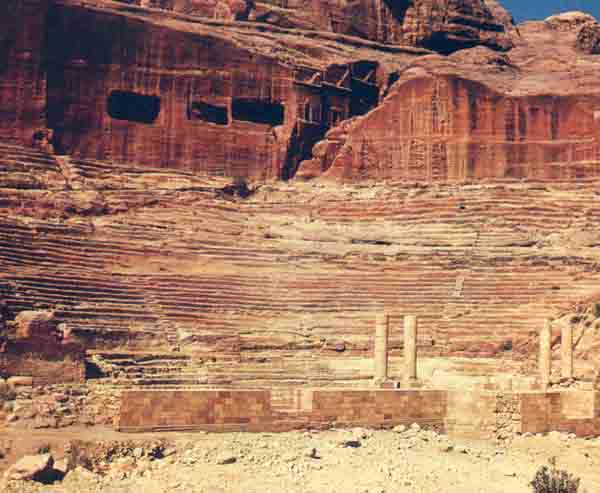Image Details

Archaeological Institute of America
Eight thousand spectators could sit together in Petra’s Main Theater. Carved from the sheer rock cliff, the 33 rows of seats were arranged in three hers, each divided into six sections. The dark rectangles on the rear wall are the remains of tombs cut away to make room for the theater.
An important element of most Nabatean temples, theaters were probably used for funerary rites, according to the author, rather than for popular assemblies and plays. Petra’s Roman-style theater probably dates to the reign of the Nabatean king Aretas IV (9 B.C.–40 A.D.) and may have been used for his funeral if the nearby Treasury of the Pharaoh (see front cover) really is his tomb. The raised stage in the foreground has been partially restored by the Jordanian Department of Antiquities.
